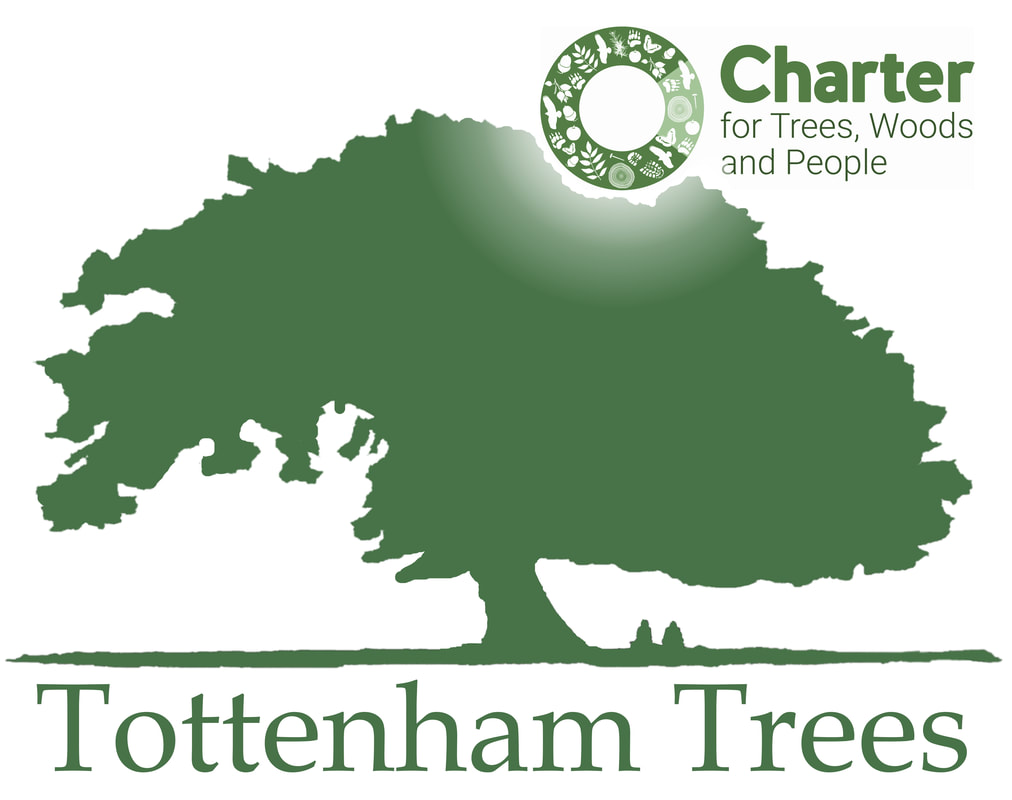Winter tree blog : Evergreen Trees
We are coming out of winter, when the outline of the bare trees against the sky has its own beauty. We can see clearly how the branches and twigs are arranged. There may be the remains of seed heads - beechmast, alder cones and sycamore keys.
Winter is also a time to appreciate our native evergreen trees that provide a welcome splash of green and shelter for birds in the cold weather. Yew, juniper, box, holly and Scots pine.
Yew (Taxus baccata)
The yew is incredibly long-lived and is not considered ancient until it reaches 900 years old. Ten yew trees in Britain are believed to predate the 10th century. They are often found in churchyards - but which came first - the yews or the churches? All parts of the tree are poisonous, except rather oddly the bright red fleshy surrounding to the seed (called the aril). It also grows in woodland in southern Britain, often under beech trees. It has needle like leaves with a raised central vein underneath. Trees are male or female. Yew timber is strong and durable and it was used for making longbows, that made English and Welsh archers invincible on medieval battlefields (although there is some evidence that yew from Europe was preferred as it grew more slowly). Certain compounds found in the bark of yew trees were discovered in 1967 to have efficacy as anti-cancer agents.
Juniper (Juniperus communis)
In the UK this usually grows as a low growing shrub on lowland chalk and moorland, but plants can be up to 200 years old. The needles have a single pale band on the upper surface and grey green beneath. Male and female plants are separate. The fruit is a purple, fleshy berry like cone and, of course, is used to flavour gin. In recent years, this species has declined in numbers, and the plant conservation charity Plantlife has been carrying out restoration work to increase its range again. Without vital work such as this, Juniper is likely to become extinct in lowland England within the next 50 years – which in turn could impact other species such as goldcrest, fieldfare and song thrush and chalkhill blue and silver-spotted skipper butterflies. It is said to protect against witches.
Box (Buxus sempervirens)
Mostly associated with gardens and shaped topiary, slow growing box forms the understorey in woodlands across Europe, mostly on chalky/limestone soils. The leaves are evergreen, dark green, waxy, oval and poisonous. Boxwood is very hard and often used in marquetry and instrument making. Sadly, the effects of box blight and then the box moth has largely wiped out this species around the Mediterranean and in southern England.
Holly (Ilex aquifolium)
Mature trees can live for up to 300 years. Leaves are glossy and shiny with prickles. Male and female flowers are on different trees, so to get those shiny red berries for Christmas you need a male and female tree. The holly is native in the UK and across Europe, North Africa and western Asia. It is common in woodland, scrub and hedgerows, especially in oak and beech woodland. Holly provides dense cover and good nesting opportunities for birds, while its deep, dry leaf litter may be used by hedgehogs and small mammals for hibernation. Holly wood is the whitest of all woods, and is heavy, hard and fine-grained. It can be stained and polished and is used to make furniture or in engraving work. It is commonly used to make walking sticks. Holly wood also makes good firewood and burns with a strong heat. Holly branches are still used to decorate homes and make wreaths at Christmas.
Scots Pine (Pinus sylvestris)
Our only native pine tree loves heathland and, of course, the Scottish highlands. It can live up to 700 years and has blue-green needles like leaves that are slightly twisted. It produces pine cones and its timber is widely used in the construction industry.
So there we have it, our native evergreens, long may we enjoy them in the dark days of winter.
Pamela Harling
We are coming out of winter, when the outline of the bare trees against the sky has its own beauty. We can see clearly how the branches and twigs are arranged. There may be the remains of seed heads - beechmast, alder cones and sycamore keys.
Winter is also a time to appreciate our native evergreen trees that provide a welcome splash of green and shelter for birds in the cold weather. Yew, juniper, box, holly and Scots pine.
Yew (Taxus baccata)
The yew is incredibly long-lived and is not considered ancient until it reaches 900 years old. Ten yew trees in Britain are believed to predate the 10th century. They are often found in churchyards - but which came first - the yews or the churches? All parts of the tree are poisonous, except rather oddly the bright red fleshy surrounding to the seed (called the aril). It also grows in woodland in southern Britain, often under beech trees. It has needle like leaves with a raised central vein underneath. Trees are male or female. Yew timber is strong and durable and it was used for making longbows, that made English and Welsh archers invincible on medieval battlefields (although there is some evidence that yew from Europe was preferred as it grew more slowly). Certain compounds found in the bark of yew trees were discovered in 1967 to have efficacy as anti-cancer agents.
Juniper (Juniperus communis)
In the UK this usually grows as a low growing shrub on lowland chalk and moorland, but plants can be up to 200 years old. The needles have a single pale band on the upper surface and grey green beneath. Male and female plants are separate. The fruit is a purple, fleshy berry like cone and, of course, is used to flavour gin. In recent years, this species has declined in numbers, and the plant conservation charity Plantlife has been carrying out restoration work to increase its range again. Without vital work such as this, Juniper is likely to become extinct in lowland England within the next 50 years – which in turn could impact other species such as goldcrest, fieldfare and song thrush and chalkhill blue and silver-spotted skipper butterflies. It is said to protect against witches.
Box (Buxus sempervirens)
Mostly associated with gardens and shaped topiary, slow growing box forms the understorey in woodlands across Europe, mostly on chalky/limestone soils. The leaves are evergreen, dark green, waxy, oval and poisonous. Boxwood is very hard and often used in marquetry and instrument making. Sadly, the effects of box blight and then the box moth has largely wiped out this species around the Mediterranean and in southern England.
Holly (Ilex aquifolium)
Mature trees can live for up to 300 years. Leaves are glossy and shiny with prickles. Male and female flowers are on different trees, so to get those shiny red berries for Christmas you need a male and female tree. The holly is native in the UK and across Europe, North Africa and western Asia. It is common in woodland, scrub and hedgerows, especially in oak and beech woodland. Holly provides dense cover and good nesting opportunities for birds, while its deep, dry leaf litter may be used by hedgehogs and small mammals for hibernation. Holly wood is the whitest of all woods, and is heavy, hard and fine-grained. It can be stained and polished and is used to make furniture or in engraving work. It is commonly used to make walking sticks. Holly wood also makes good firewood and burns with a strong heat. Holly branches are still used to decorate homes and make wreaths at Christmas.
Scots Pine (Pinus sylvestris)
Our only native pine tree loves heathland and, of course, the Scottish highlands. It can live up to 700 years and has blue-green needles like leaves that are slightly twisted. It produces pine cones and its timber is widely used in the construction industry.
So there we have it, our native evergreens, long may we enjoy them in the dark days of winter.
Pamela Harling

